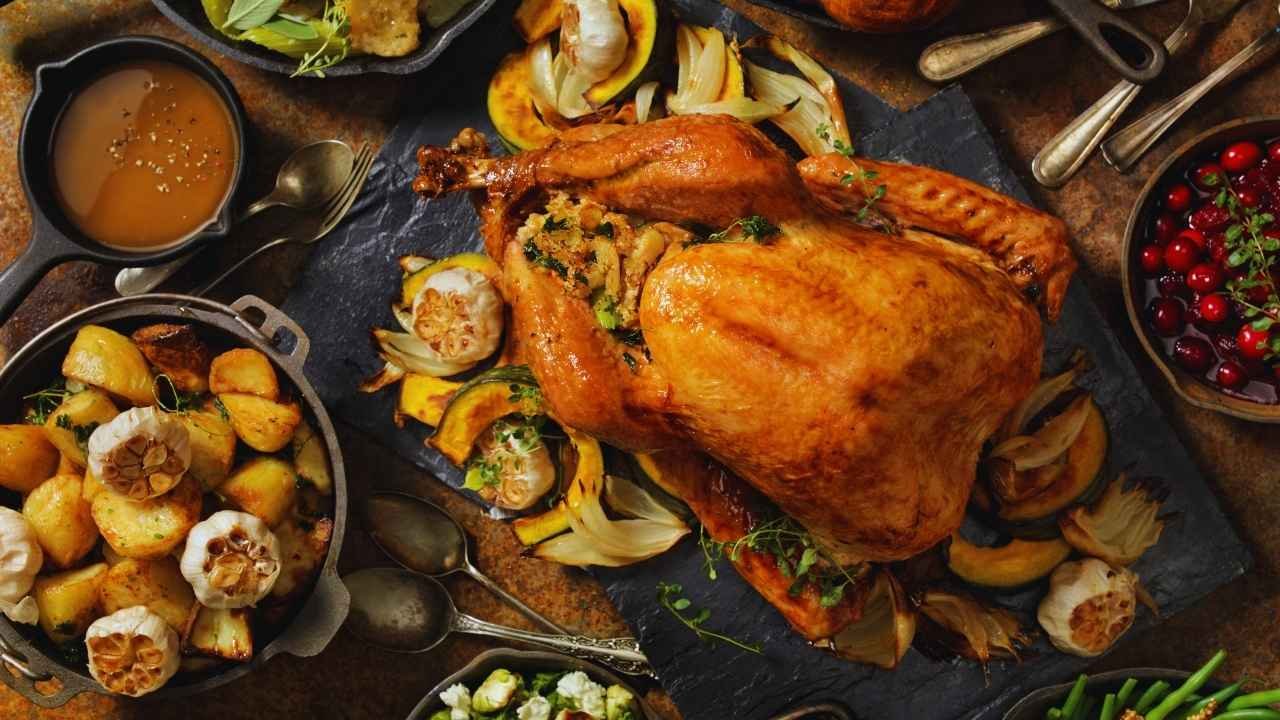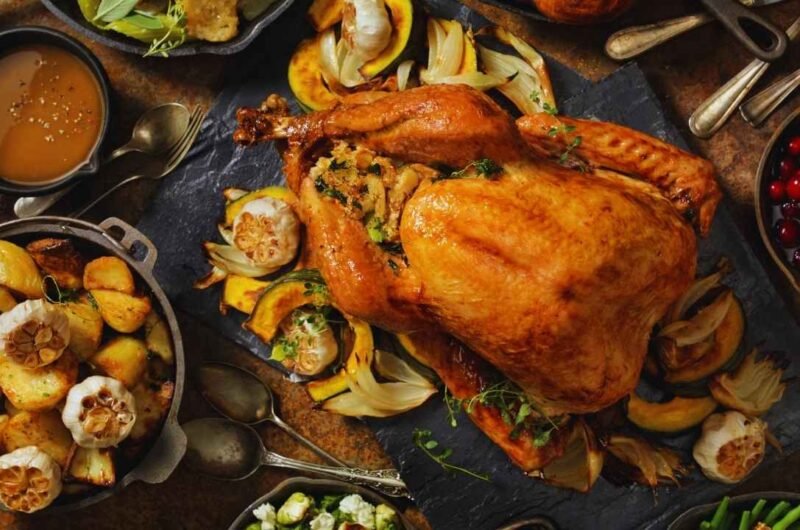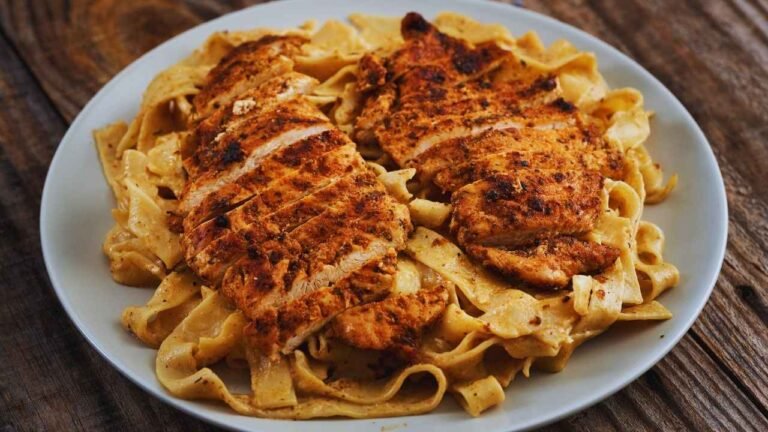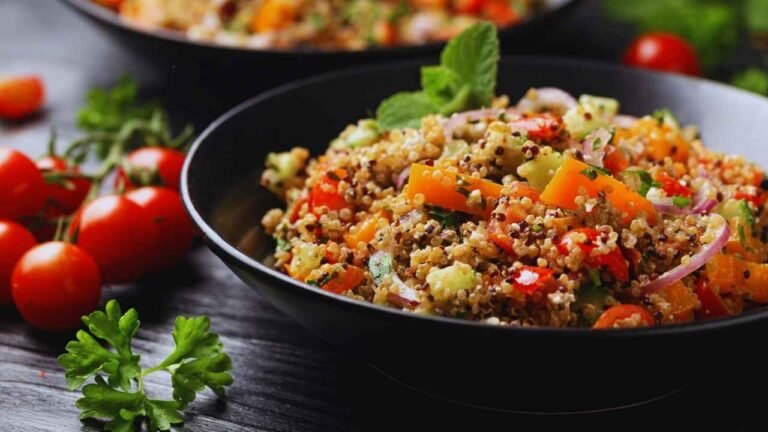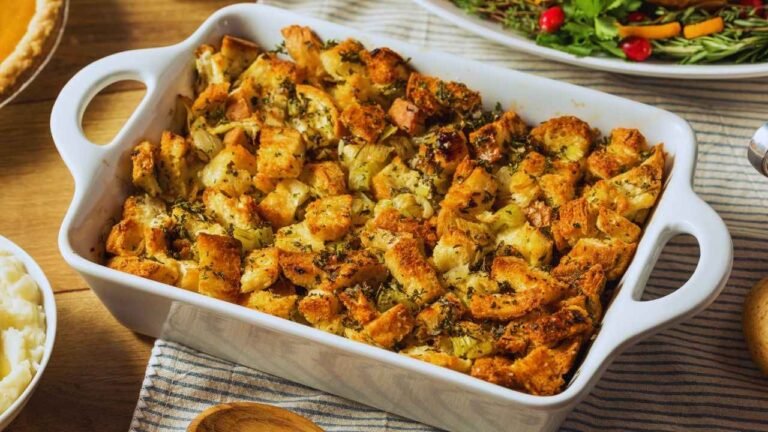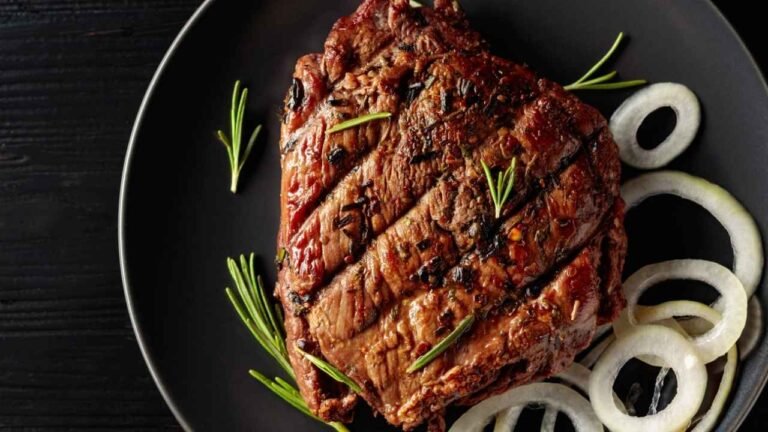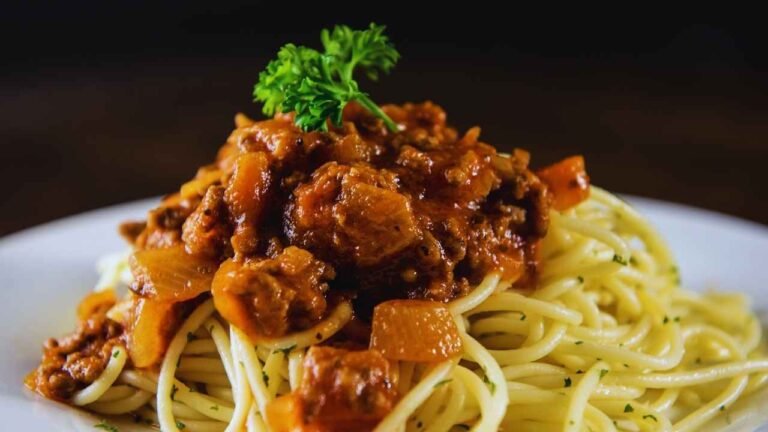How to Perfectly Roast a Turkey Upside Down
The debate over whether or not to roast a turkey upside down has grown in popularity among home cooks looking to create the ideal Christmas feast. Many have shown interest in this unusual technique because it promises juicier meat and a golden-brown skin. Turning a turkey inside out is a novel approach that defies conventional roasting methods and may be advantageous for adventurous cooks.
If you’re wondering how to cook a turkey upside down, all you have to do is place the bird in the roasting pan, breast side down. This arrangement facilitates the flow of liquids into the breast flesh while cooking, which may produce a moister turkey that is more flavourful. This post will go over the rationale behind this technique, provide a step-by-step preparation guide, talk about cooking temps and timings, and advise how to use a meat thermometer to make sure your upside-down turkey is perfectly cooked.
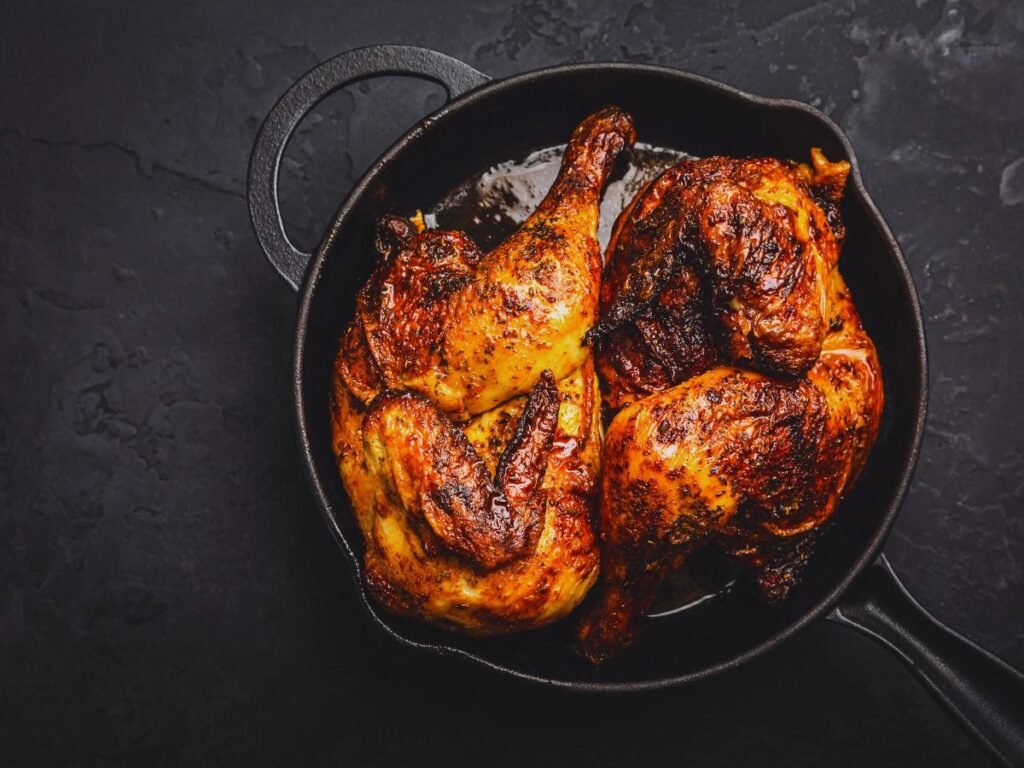
Why Roast a Turkey Upside Down?
For good reason, inverting a turkey and cooking it is becoming more common among home cooks. Numerous benefits from this nontraditional approach might improve the roasted bird’s overall quality.
Benefits of Upside-Down Roasting
One of its main advantages is The self-basting action resulting from roasting a turkey upside down. All the flavourful liquids that generally run to the bottom of the roasting pan naturally soak into the breast flesh when the bird is positioned breast-side down in the pan. This method produces a turkey that is moister and more flavourful throughout, particularly in the breast region, which is often prone to drying out.
This approach also has the benefit of encouraging more even cooking. Turning the turkey upside down allows the darker flesh to cook more quickly since it is closer to the heat source. While you wait for the dark flesh to reach the right temperature, this may help avoid the typical problem of overdone breast meat.
Another way to shorten the cooking time is to roast anything upside-down. The dark meat may cook faster due to its exposed position, which might shorten the roasting time. This might be especially helpful when cooking a big holiday feast that calls for many dishes.
How It Enhances Flavor and Moisture
The upside-down roasting method significantly affects the turkey’s flavor and moisture content; rendered fat and black meat fluids trickle down into the breast while cooking, giving the bird a slow-basting effect. This natural basting method solves the typical issue of a dry turkey breast by keeping the white flesh juicy and soft.
Furthermore, this technique might do away with the need for regular basting. Customary recipes often ask repeatedly opening the oven door to baste the turkey, which may cause the meat to lose moisture. By roasting the turkey upside-down, the chef can keep the oven door closed and the cooking temperature constant because the bird bastes itself.
While there are numerous advantages to upside-down roasting, it’s vital to remember that there are also certain things to remember. For example, the breast skin may not be as brown as it would be if roasted traditionally. To counter this, however, you may turn the turkey breast upside down for the final few minutes of cooking or broil it for a short while to get a crispy skin.
It’s also best to leave the turkey out while utilizing this procedure. The filling would absorb the liquids intended to baste the breast flesh. To guarantee that the turkey and stuffing are cooked to perfection, it is advised to prepare the stuffing in a separate baking dish.
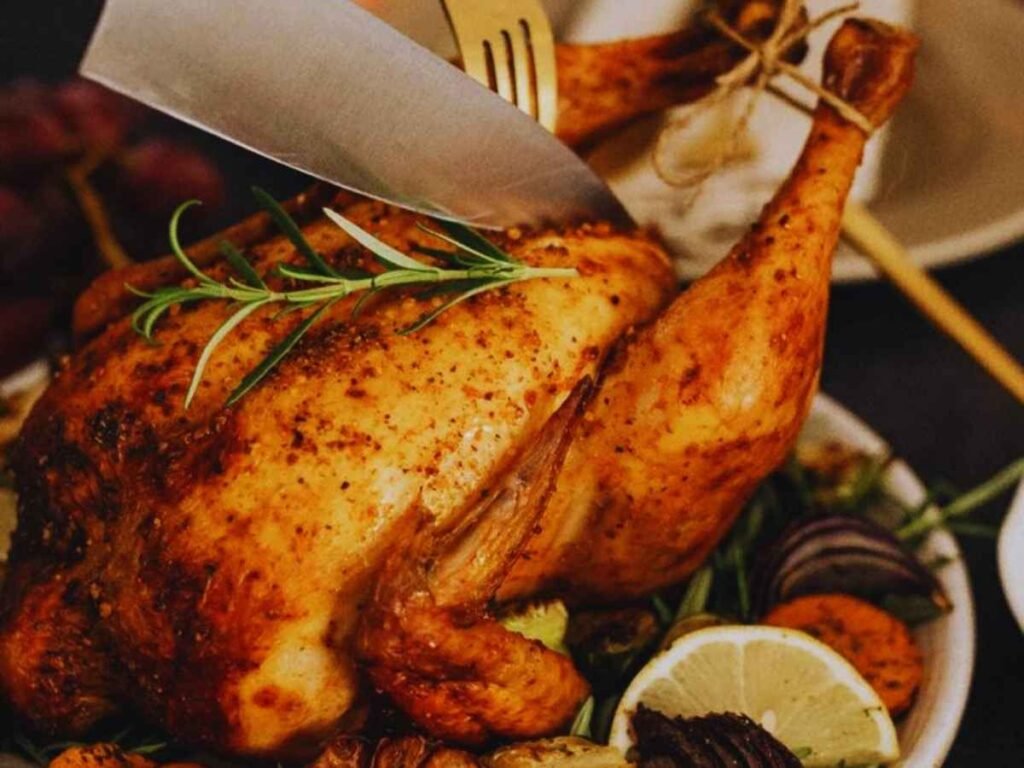
Preparing Your Turkey for Upside-Down Roasting
Thawing and Cleaning
It is crucial to properly defrost and clean the turkey before cooking it upside down. The refrigerator approach is the best for safe thawing. Since it takes about a day for every four pounds of turkey to defrost in the refrigerator, preparation is necessary for this procedure. This indicates that a 15-pound turkey will take 3–4 days to defrost thoroughly.
If you are pressed for time, a speedier way is to immerse the turkey in cold water while it is still wrapped. This method involves changing the water every 30 minutes to maintain a safe temperature, which takes around 30 minutes per pound. The water must be kept cold to stop bacterial development, preferably around 40°F.
After the turkey has thawed, please remove it from its packing and inspect the neck and cavity for giblets. Remove these and save them for later use, if desired. Despite what many people think, it’s not advisable to rinse the turkey. Because washing chicken may spread germs throughout the kitchen, the USDA cautions against doing so. Instead, use paper towels to pat dry the turkey inside and outside thoroughly.
Seasoning and Trussing
Seasoning is essential when cooking the turkey upside down to bring out the taste and guarantee juicy flesh. Dry brining is an easy-to-use but efficient technique. To massage the turkey, use a combination of salt and pepper; for an average-sized turkey, roughly 1/3 cup of salt and one tablespoon of pepper are used. Cover the whole turkey, including the cavity, with this mixture.
Some cooks suggest making a herb butter for extra taste. Combine melted butter with finely chopped fresh sage, rosemary, thyme, and garlic. Spread this mixture below the turkey breast after carefully separating the skin. This stage imparts flavor and keeps the meat juicy as it cooks.
It’s time to get the turkey ready for roasting after seasoning. Take off any metal and plastic clips, including the pop-up timer, if it is there. These are not accurate markers of doneness and may impede uniform cooking.
Although it’s unnecessary, trussing the turkey may assist in guaranteeing even cooking. Just use kitchen twine to tie the legs of the truss together. This promotes more equal cooking and helps the bird keep its shape when roasting.
You may prepare a turkey for upside-down roasting by following thawing, cleaning, seasoning, and trussing procedures. This technique produces juicy breast flesh by allowing liquids to seep down while cooking.
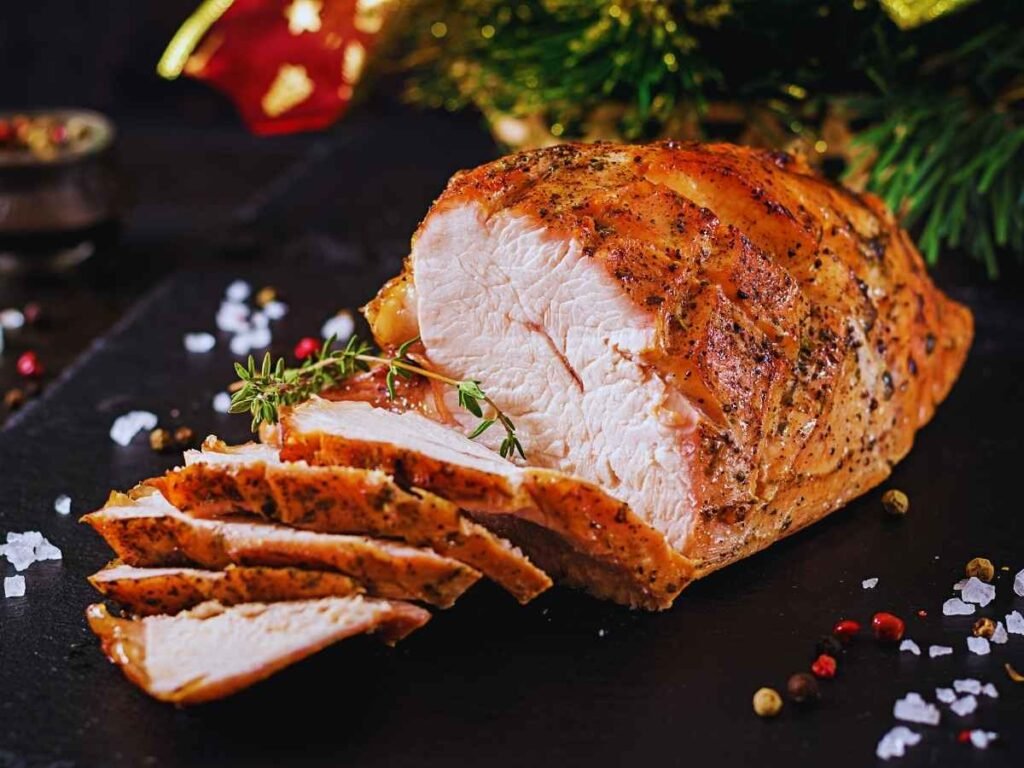
Step-by-Step Guide to Upside-Down Turkey Roasting
Positioning the Turkey
Preheat the oven to 425°F with the rack in the lowest third of the oven before beginning to roast a turkey upside down. Tie kitchen twine between the drumsticks and tuck the wings under the bird. This facilitates simpler turning later on and helps guarantee even cooking.
Next, set up a roasting pan with a rack that is V-shaped. Spread buttered ciabatta bread on the rack for a novel twist that keeps the skin from sticking. This serves to support and cushion the turkey breast. Ensure the turkey is not directly on the rack by carefully placing it breast-side down on the bread.
Temperature and Timing
After positioning the turkey, it’s time to begin roasting. Set the temperature high for the first forty-five minutes at 425°F. Because the dark meat is now closer to the heat source, this first burst of heat helps it cook more quickly.
Take the turkey out of the oven after forty-five minutes. Carefully turn the turkey so that the breast side is up by holding the neck side with a kitchen towel and using a wooden spoon as leverage within the cavity. Although this stage may appear complicated, it is doable with the correct resources.
Add some chicken or turkey stock to the pan; it will mix with the drippings to produce a delicious basting sauce. Return the turkey to the oven and lower the temperature to 350°F.
Roast the turkey for 20 minutes, basting it with pan juices each time. The size of your turkey will determine how long it takes to cook. Generally, roast a turkey for around 13 minutes per pound.
Flipping and Finishing
Check the internal temperature of your turkey using a meat thermometer to ensure it’s cooked to perfection. Avoiding the bone, insert it into the thickest area of the thigh. When the turkey reaches 165°F on the thermometer, it is done.
After the turkey has reached the proper temperature, take it out of the oven and give it a 20 to 25-minute rest. The turkey will be moist and tasty by allowing the liquids to redistribute throughout the flesh during this resting time. There is an answer for everyone asking whether it is possible to roast a turkey upside down and yet have crispy skin. Turn the turkey over, breast-side up, and broil it for a little while before carving. You get the best of both worlds with this last process, which browns and crisps the skin, giving you crispy skin and juicy meat.
If the turkey is still upside down on the rack, begin carving by removing the legs. After that, turn it over to take off the breasts and drumsticks. Carve as usual if you’ve previously flipped it breast-side up for broiling.
This upside-down roasting technique will result in a moist, delicious, well-cooked turkey that will wow your visitors.
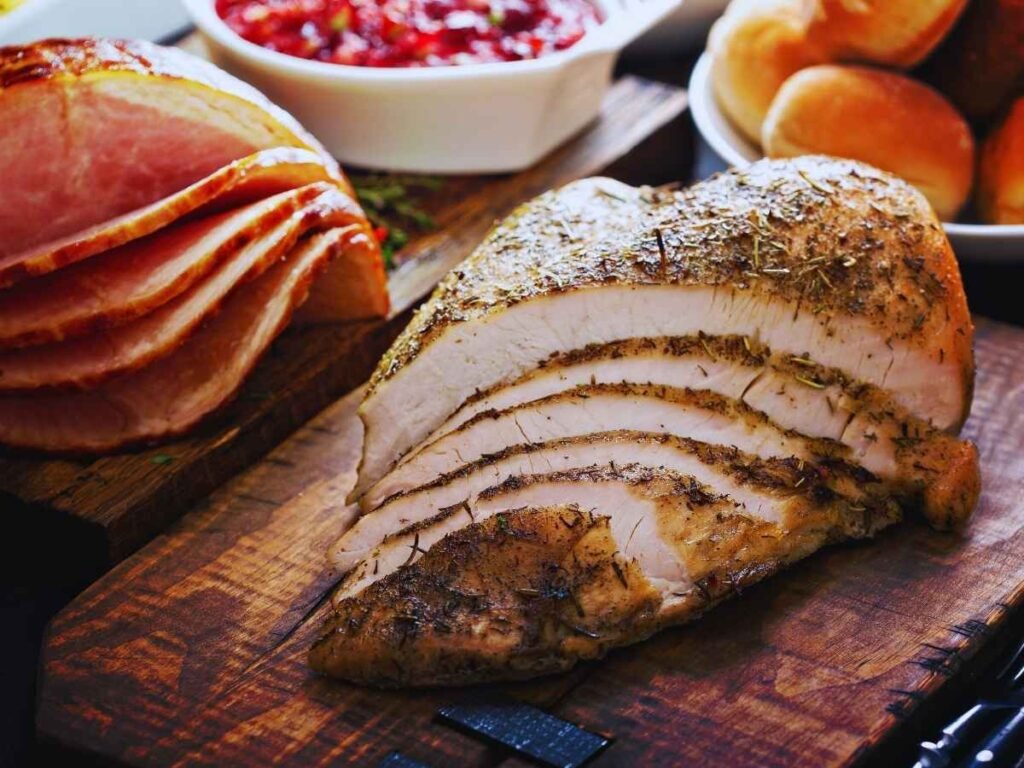
Serving Your Perfectly Roasted Upside-Down Turkey
Resting and Carving
Allowing the turkey to rest before carving is essential when preparing an upside-down turkey. Making sure the meat is juicy requires doing this step. After the turkey is cooked, take it out of the oven and rest for twenty to thirty minutes. The internal temperature will increase during this resting time, eventually reaching 165°F, the USDA safe-cooking standard and the fluids will redistribute throughout the meat.
It’s time to get ready for carving while the turkey is resting. To start, gently turn the bird so that any cavity fluids may drip into the roasting pan. We’re going to utilize these tasty drippings for gravy later on. Tent the turkey with foil to keep it warm after moving it to a cutting board or serving plate.
When carving time comes, begin by cutting off the legs. Cut through the flesh that divides the thigh from the breast after pulling each leg outward. Cut the joint open to remove the leg in its entirety. After that, cut through the joint and bend the wings backward to remove them.
Making long, smooth slices down either side of the breastbone, following the curvature of the bone, is how you should cut the breast flesh. Cut the breast flesh crosswise into half-inch-thick slices after removing it from the carcass. Slicing against the grain produces chunks that are soft and simple to consume.
Cut through the joint that joins the thighs and drumsticks to separate them. When slicing the meat off the thighs, you may either use your hands to remove the bone or make a cut around it with your knife.
Gravy and Accompaniments
A turkey meal is only complete with a flavorful gravy, and the cooking drippings from the upside-down bird provide a fantastic foundation. Place the roasting pan over a burner on your stove while the turkey is resting. The handles will be hot, so proceed with caution. Skim any extra particles or fat from the pan.
To produce a straightforward yet tasty sauce, you’ll need roughly four tablespoons of meat drippings, 1/4 cup all-purpose flour, and 2 cups premium stock. Consider incorporating some Cognac into the gravy to give it more taste depth.
Heat the butter in a pot and sauté the onions until they become translucent and tender. Make a roux with the flour and whisk in the stock mixture and turkey drippings. Simmer until thickened, approximately 5 minutes; mix in cream and chopped herbs if preferred.
Serve your properly cooked upside-down turkey and dress it up with some fresh fruit and herbs on the dish. Sprigs of sage and thyme, fresh figs, and various fruits may give your display a festive feel.
Recall that the details are what make a turkey feast successful. Turn your roasted turkey into the table’s centerpiece by giving it enough time to rest, cutting it precisely, and serving it with a thick, handmade gravy.
How to Perfectly Roast a Turkey Upside Down
Course: Main DishCuisine: TurkeyDifficulty: Medium12
servings30
minutes2
hours30
minutes700
kcal3
hoursFor roasting the turkey breast-side down, this recipe for an upside-down turkey roasting guarantees juicy, tasty flesh. The technique keeps the breast moist by allowing natural basting as the fluids seep into it. This is ideal for a tasty holiday feast since it has uncomplicated stages, a crispy skin finish, and basic seasoning.
Ingredients
Turkey (12-15 lbs)
Add salt, pepper, and seasonings such as rosemary, thyme, and sage.
Butter or herb butter
Chicken or turkey stock (for basting)
Ciabatta bread is optional to place under the turkey.
Directions
- Thaw and Clean: Thaw the turkey fully (3–4 days for a 15-pound turkey). Pat dry with paper towels.
- Season: Rub salt, pepper, and herbs on the turkey and inside the cavity. Spread herb butter under the skin for added flavor.
- Position: Place the turkey breast-side down in a roasting pan on a rack (use ciabatta to prevent sticking).
- Roast: Roast at 425°F for 45 minutes, then turn turkey breast-side up, add stock, reduce heat to 350°F, and roast until internal temperature reaches 165°F.
- Rest and Carve: Let the turkey rest for 20 to 30 minutes before carving.
Recipe Video
Conclusion
It has been shown that roasting a turkey upside down improves the overall quality of the bird. This nontraditional technique solves frequent problems encountered while making this centerpiece of the Christmas spread by producing more uniform cooking and juicy breast flesh. This method improves the taste and moisture content of the breast flesh by letting the tasty fluids naturally soak into it. It also may shorten the cooking time and reduce the need for frequent basting.
In conclusion, teaching your guests to roast turkey upside down may result in an unforgettable dinner experience. Every step is crucial to getting the ideal roast, from seasoning and freezing to carefully turning and finishing under the broiler for crispy skin. Kindly share your images with me or leave a comment below to let me know how your turkeys turned out! Cheers to your baking! With affection, Carter, Olivia Rose. Remember that practice makes perfect, and you’ll improve at this creative cooking technique with every try.
Frequently Asked Questions
What is the most effective method for roasting a turkey?
One great way to roast a turkey is to place it upside down in a roasting pan with a V-shaped rack. This method keeps the breast, which dries out more quickly, covered from direct heat, and retains moisture while allowing the legs to cook through over the high heat.
Should a turkey crown also be cooked upside down?
Grilling a turkey crown upside down lets the fluids seep into the breast flesh, keeping it moist. During the final 40 minutes of cooking, turn the turkey crown right side up for the best results and a nicely browned skin. Remember to flip the crown over and baste it with the pan juices.
Is it necessary to flip a turkey while cooking?
Yes, it is best to roast the turkey with its breast facing down at first, then turn it over halfway through. This technique ensures that the breast flesh stays juicy while helping to roast the bird evenly.
Do you need to elevate a turkey while roasting it?
For consistent cooking, the turkey must be elevated in the roasting pan. By doing this, the turkey is kept from resting near the pan’s surface, which might cause uneven cooking and less crispy skin on the bird’s bottom regions. Utilizing a conventional rimmed baking sheet or a comparable pan facilitates improved heat distribution around the turkey.

